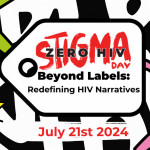New research on the Thai HIV vaccine trial that was shuttered in 2009 has found that two of the antibodies the vaccine prompted actually worked against one another to limit protection against HIV transmission. Known as RV144, the vaccine trial reached a 31 percent rate of protection; while this is the highest rate any vaccine has ever achieved, it still fell short of the 50 percent benchmark public health researchers have slated as necessary to curb the epidemic.
Publishing their findings in the journal Proceedings of the National Academy of Sciences, an international team of researchers has discovered that an antibody the vaccine induces, known as immunoglobulin A (IgA), can dampen the protective effect of another vaccine-prompted antibody, known as immunoglobulin G (IgG). Both IgA and IgG bind to the same site on HIV’s outer envelope. Consequently, IgA antibodies can impede IgG from activating the immune system’s killer cells.
Those participants in the vaccine trial who had a higher ratio of IgA to IgG in their blood samples experienced lower rates of success with the vaccine. This suggests that the ratio between the two antibodies may be a key element in determining the vaccine’s effectiveness.
To read a release on the study, click here.
To read the study abstract, click here.
Advertisement
Advertisement
Advertisement






Comments
Comments